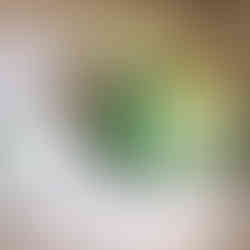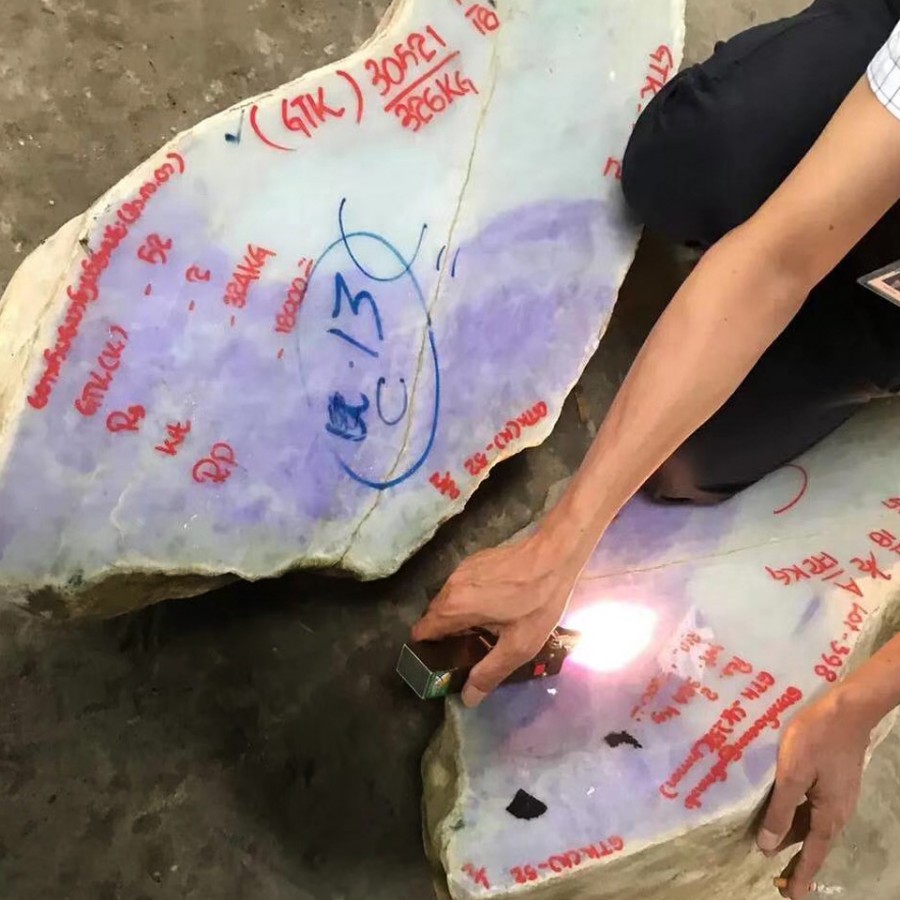Jadeite's Festival - Myanmar's 55th Jade Jewelry Fair
- OGP

- Jun 30, 2018
- 6 min read
Updated: Oct 6, 2022
By OGP Reporters / Members Contribute File Photos
Oh Good Party
Recently Myanmar's jade industry has expanded substantially in response to increasing demand for the stone in Chinese markets with jade export revenues rising from $150–300 million USD in the early 2000s to $1.75 billion USD during the 2010-2011 fiscal year, which accounts for a fifth of Myanmar's total export revenue...We have to say few countries’ economies are so bound to one resource. Myanmar's jade trade makes up almost half of the nation's GDP. It is a place where remote mining operations bring wealth and opportunity—but only to the few who are at the apex of the pyramid.
Jade holds a significant place in the Chinese culture as it is believed to be a bridge to heaven and afterlife. This belief stems from the antiquity associated with the gem as well as the virtues of righteousness and knowledge it symbolizes. The Chinese believe that the wearer of jade will be constantly reminded of the strength in resilience and toughness that build one's character. Thus by wearing jade, one is more virtuous by living these values. There is also a popular belief that jade protects the wearer from disasters and guides their fortune.
Jade has been associated with China going as far back as the Liangzhu culture (3400-2250 BC) but this jade was primarily nephrite, a milky white stone more common than the green Burmese jadeite. Jadeite, which is rare, comes from Myanmar; what is thought of as Chinese jade is in fact the more common nephrite.
But the value of the finest jade can rival that of diamonds. In 2014, a necklace of 27 beads, once owned by Woolworth heiress Barbara Hutton, sold at auction for $27 million, more than double the estimate. In a catalog note, Sotheby’s enthused that the beads were “round and succulent in shape and color, like mouth-watering grapes under warm sunlight, glowing through their thin skins, exuberant and mellow, elating the spirit of whoever set eyes on them.
Pursuing wealth and value is OGP’s nature, so we participated in the most important Jade Jewelry Fair in Myanmar.
The annual Myanmar Jade Jewelry Fair (commonly known as the Emerald Public Plate) was opened on the 20th in Naypyidaw, Myanmar’s Vice President Henry Banjo, local government officials and members of the Myanmar Jewelry Association. Burmese Jadeite has been held since 1964. The current session is the 55th session. The date of the event is June 20th to 29th. (Look at the gemstones from June 20th to 24th. Bidding on the June 25th to the 29th.)
This year, the minimum deposit is 10,000 euros for jewelry and 20,000 euros for jade. The ratio of bidding margin to the amount of jade that can be invested is raised from 5% to 10%, starting at 20,000 euros. The purchase limit has risen and the quality has dropped slightly. We also learned that as an important jade production area, Myanmar is tightening the mining rights of jade. Starting from last year, some expired mining permits will not be extended. At the same time, Myanmar is introducing new laws aimed at protecting environmental resources and maintaining market balance.
In fact, Myanmar-produced rubies, sapphires and jade are among the best in the world. Up and until now though, Myanmar’s gemstone traders and entrepreneurs had only sold raw or uncut gemstones to buyers from around the world. Most of the jadeite mined in Myanmar is not cut for use in the country, instead being transported to other nations, primarily in Asia, for use in jewelry and other products.
There are 1,203 local jewelers participating in the current session of the fair. There are 3,132 foreign jewelers from China, Thailand, Canada and the United States. The total transaction price of the current session is expected to reach 500 million euros.(The turnover of the last Jade Jewelry Fair was 438 million Euros)There were a total of 6,795 piles of jadeite ore, 336 stones, and 360 pearls. The base price of each pile of pearls and gems starts at 500 euros, the base price of the emerald ore heap starts at 4,000 euros, and the base price of jadeite finished products starts at 1,000 euros.
Chinese buyers flock to the largest open-air jade market in the world. Conventionally, high-quality jadeite are usually sold at more than ten times the price.
Jadeite's virtues, such as fine texture, immense toughness and high hardness, contribute to the high luster and transparency, as well as the durability to withstand a high polish. Jade comes in many hues, from the shade of a kingfisher’s throat to what the Chinese describe as “moss entangled with melting snow.” Jadeite is one of the world’s most coveted gems, chiefly among the Chinese, whose growing buying power has spurred record sales.
Myanmar Gems Enterprise (MGE) classifies jade into Imperial jade (7 grades): grade A brings the highest price. The “imperial jade” is the world’s most valuable and is highly sought-after for its near-transparent emerald-green hues. The catalog then lists Commercial jade (also 7 grades): higher grades of commercial jade, both cabochons and rough, are priced very close to imperial jade. The third grade is Utility jade, which is of such quality that it can be used only for carving and made into cups and saucers and other decorative items. This utility jade is commonly bleached and dyed.
Today, Myanmar is the origin of upwards of 70% of the world's supply of high-quality jadeite. It estimates that the figure for the last decade could be more than $120 billion.
From 1964 onwards, the Ministry of Mines set up the Myanmar Gems Enterprise to manage the sale of jade at government-controlled auctions in Rangoon. Smuggling of small quantities of jade continued, however. The Ministry of Mines now conducted the extraction and sale of jade exclusively through their auctions (emporiums). From 1964 to 1975, dollar volume of jade sales remained less than $1 million. The first time jade sales reached more than $1 million was in 1976. The amount of jade sold in dollar terms achieved $1 billion in 2010. Restrictions on private mining enterprises slowly eased throughout the 1980s and 1990s.
Until the capital of Myanmar was moved from Yangon (formerly Rangoon) to Naypyidaw, jade auctions were held in the city. The auction procedure was open only to invited buyers. A liberal amount of time was provided to view and examine the jade boulders with provisions for light, water, and other paraphernalia necessary for close examination. The auction was held over a 10-day period, with viewing occurring the first day, along with auctions of gems and pearls, followed by auction of jade. All registered buyers received catalogues and an assigned bidder number, which had to be recorded on their bid form. Bid forms were collected by MGE officials and opened by the auction committee.
Recently Myanmar's jade industry has expanded substantially in response to increasing demand for the stone in Chinese markets with jade export revenues rising from $150–300 million USD in the early 2000s to $1.75 billion USD during the 2010-2011 fiscal year, which accounts for a fifth of Myanmar's total export revenue. Since 2010, the volume and dollar sales have reached astronomical levels. We have to say few countries’ economies are so bound to one resource. Myanmar's jade trade makes up almost half of the nation's GDP. It is a place where remote mining operations bring wealth and opportunity—but only to the few who are at the apex of the pyramid.
Beijing’s anticorruption campaign has led to a drop in jade prices, as conspicuous consumption takes on political risk, but there are still plenty of speculators in Hpakant’s Lone Khin village that the jadeite deposits found in Myanmar's northern regions is the highest quality jadeite in the world. The real total could even be much higher with many insiders saying that the best quality jade never goes through the books and is smuggled directly to Chinese buyers.Beginning in 2004, additional "special" auctions were called to help fill the government's coffers. Moreover, senior military officers arrange "private" sales of the finest gems and keep the proceeds. Together, official auctions and military sales of the most valuable gems account for the major portion of Burma's gemstones trade. The “black box” makes effective governance of the industry very difficult. Independent estimates of the trade’s value vary widely. It is worth somewhere between $8 billion and $40 billion annually.



















Comments